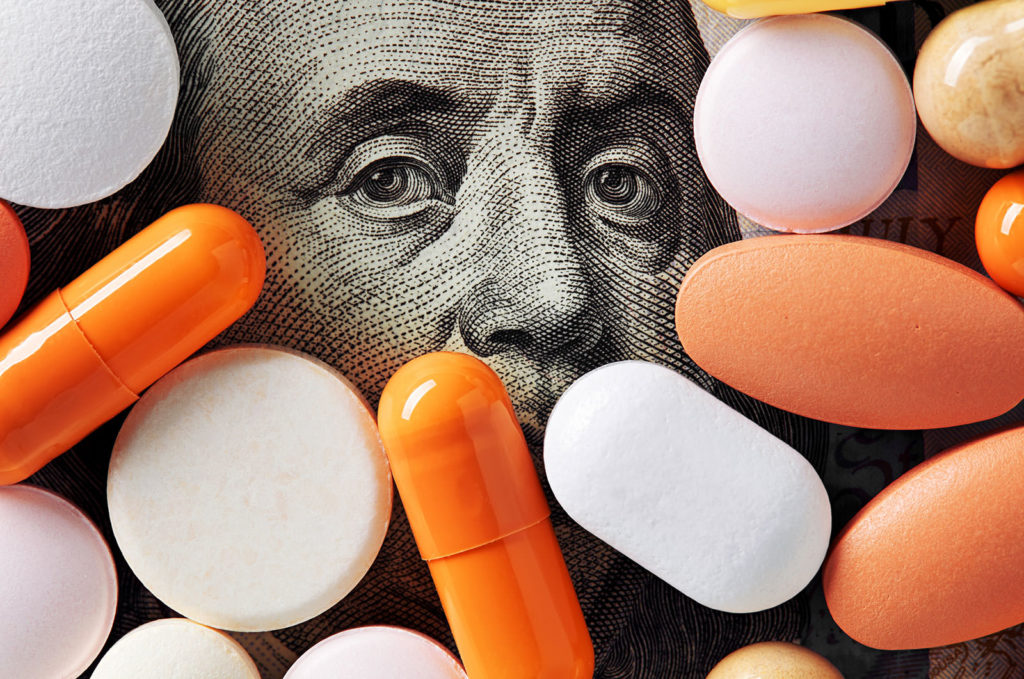More than 72,000 people died from a drug overdose in 2017, up from 17,000 overdose deaths in 1999. Three out of four drug-related deaths involve opioids. The National Institute on Drug Abuse attributes the increased number of overdose deaths to the rise in prescription opioid painkillers during the 1990s and early 2000s. As the number of people receiving the drugs increased, the easier access people had to them. And so, we now have an opioid crisis on hand across the country, in addition to the problems that thousands of people experience with other types of illicit drugs. Apart from a potential overdose, illicit drug use causes family problems, issues with jobs and relationships, criminal behaviors, and other atrocities that affect not only an addict, but family, friends, and those closest to them. What is the real cost of drugs and addiction in the United States?
Marijuana: Medical Costs Versus the Price of Addiction
Marijuana is legal for medicinal and recreational purposes in many states throughout the country. Legalization increases the risk of addiction to the drug. Marijuana is the most commonly used drug, aside from alcohol. While risks of addiction to marijuana are low, it is the psychological dependance most of the concern.
A 1975 New York Times article concerning the soaring prices of marijuana indicated that college students paid between $15 – $60 per ounce. Today, the same ounce of marijuana costs between $71 – $300. High-grade marijuana or marijuana concentrates sell for even steeper prices. Medical marijuana patients spend about half those costs. Keep in mind marijuana prices fluctuate depending on the quality, quantity, and supply. A person who smokes four marijuana joints per day can spend as much as $14,000 per year on marijuana.

The Price of Opioid Dependency and Addiction
Opioids include numerous substances, including heroin, morphine, and oxycontin. Therefore, the costs of opioid drugs vary. In 2017, there were 58.7 opioid prescriptions written for every 100 individuals in the U.S. Almost all of the prescriptions were obtained using government-funded insurance. Shocking to many, the most dangerous opioids seem to be placed in the least expensive categories.
A single Vicoden tablet sells for $5 or more on the street but costs about $1.25 per tablet through a pharmacy. The cost of an opioid addiction depends on the preferred opioid and severity of the addiction. Insurance may also impact the costs of addiction to an opioid since many people purchase them with private/government insurance.
The Cost of Heroin Addiction
Heroin and black tar heroin prices continue to drop across the country. Even still, potency levels increase, causing more risk for addiction and overdose. So often, heroin and black tar heroin are cut using harmful products, which increases the user’s risk of death.
A ‘baggie’ of heroin, or a single-use dose, costs between $5 – $20 or $153 per gram, according to the United Nations Office on Drugs and Crime. Severe heroin addiction may result in using a gram or more in a single day. Such an addiction would result in spending as much as $1,750 per week or as much as $90,000 every year.
Cost of Cocaine Addiction
Cocaine prices have remained steady for decades. What has increased is the potency for overdose, addiction, and death due to the rise in impurities used to create the drug. Cartels who import cocaine into the U.S. dilute purity to increase profits. World Drug Report indicated cocaine costs between $25 – $200 per gram in the U.S. On average; cocaine costs about $115 per gram. An addiction to cocaine is one of the most expensive habits to support. Compared to other drugs, cocaine is extremely expensive.
Hardcore cocaine users frequently ‘bump’ cocaine, so they feel the effects longer. They may use up to 5 grams per day, which can cost as much as $169,725 in a year.
Crack Cocaine Street Prices Effect on Addiction
Crack cocaine is usually just called crack. It’s a crystallized version of cocaine that is cooked prior to the sale. Crack costs less than cocaine, but it is not as pure, so the effects last shorter periods of time. Users quickly develop tolerance to this drug, increasing the amount they need to use to feel the same effects or ‘high.’ World Drug Report says that a gram of crack costs about $109. In a year, a crack addiction may cost as much as $82,000.
Meth Street Prices Effect on Addiction
U.S. Border Agents seize 20x more meth today than they did just a few short years ago. This is an increase seen at all crosspoints. Methamphetamine is four times more potent than cocaine. The drug also generates more profit in less time, making it a top choice for cartels and drug dealers looking to make a fast and easy profit. Meth is a very dangerous drug, both to produce and to use. Law enforcement must use specialized equipment when entering a ‘meth house,’ which costs the state considerable amounts of money.
Meth costs about $5 per hit, average price throughout the United States. Since the drug is nearly 100% pure, users overdose nearly 2x as often as they overdose on cocaine. Tolerance to the drug develops very quickly. While the price of meth varies considerably, a typical gram has a price tag of about $20 per gram. Some users pay as much as $60 per gram. This equals as much as $38,325 per year spent to feed a meth addiction.
The Value of Drug Addiction Treatment
Drug addiction costs the country more than $600 billion annually. Addiction treatment is considerably less expensive. Addiction treatment is also less expensive than incarcerating an individual for drug possession or use. A one-year stint in an addiction treatment program costs an average of $4,700, while a one-year stint in jail costs taxpayers about $24,000. Furthermore, every dollar spent to rehabilitate an addict saves $4 – $7 in drug-related crime costs. Addiction treatment saves families. It saves lives. And it saves money. Addiction treatment is hands down the best choice.

